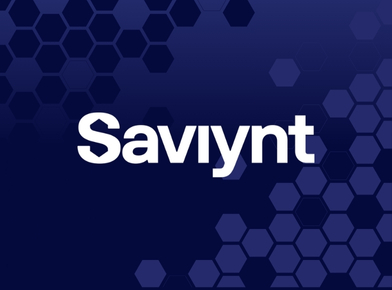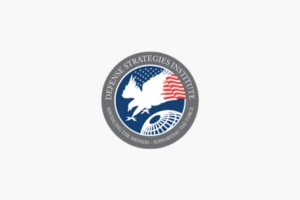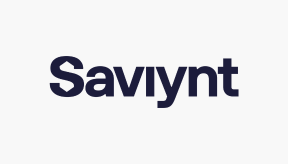The National Institute of Standards and Technology (NIST) recently unveiled version 2.0 of its respected Cybersecurity Framework. This update represents a significant advancement in one of the most extensively adopted cybersecurity guidelines across various industries. The release highlights several crucial aspects of the rapidly evolving cybersecurity threat landscape, including a heightened focus on modern threats such as advanced persistent threats (APTs), ransomware, and supply chain attacks. It also incorporates new and emerging technologies like artificial intelligence (AI), the Internet of Things (IoT). The updated framework provides organizations with a comprehensive roadmap to manage risk, recover from incidents, and enhance their defensive security strategies in light of these emerging threats and technological advancements.
This high-level article delves into the specific changes related to identity and privileged access from its predecessor, the potential impact on cybersecurity best practices, and the increased emphasis on modern attack vectors prevalent in the industry.
Introduction to the NIST Cybersecurity Framework 2.0
The NIST Cybersecurity Framework, initially developed in 2014, has since become a cornerstone for managing and mitigating cybersecurity risks through best practices. The latest version, NIST CSF 2.0, integrates new guidelines and strategies to help organizations confront the security challenges brought about by technological advancements and the growing sophistication of threat actors. Key enhancements that warrant attention from all adopters, especially in the context of Identity and Access Management (IAM), include:
- Adaptation to Emerging Risks: The new version places a stronger emphasis on current cybersecurity challenges, such as cloud security, supply chain risks, and the threats associated with emerging technologies like artificial intelligence, the Internet of Things (IoT), and identity-based risks.
- Enhanced Clarity and Usability: The updated version offers clearer guidance and definitions, making it more accessible to a broader range of users, from small businesses to large enterprises. This ensures that best practices are easily understood and implemented by everyone.
- Integration of Privacy and Cybersecurity: Recognizing the interconnection between cybersecurity and privacy, the updated framework integrates privacy considerations, fostering a more holistic approach to information security based on data and access.
- Focus on Resilience: The framework underscores the importance of not only preventing attacks, but also developing resilient systems capable of rapid recovery from security incidents. It provides guidance for managing the full attack lifecycle, from detection and incidence response to recovery.
Cybersecurity professionals worldwide are embracing the updated NIST CSF 2.0 guidelines, recognizing its enhanced capability to equip organizations to effectively combat modern threats. As the cyber risk landscape continues to evolve, staying current with the latest frameworks and best practices is paramount.
Steps to Operationalize the Updated NIST CSF 2.0 Guidelines
Operationalizing the NIST CSF 2.0 guidelines requires a comprehensive strategy that integrates privileged access management, secure identity management, and proactive threat detection and response. Here’s how organizations can align their security measures with the core principles of the updated NIST framework:
Identify
Effective cybersecurity starts with a thorough understanding of the business context and the identification of critical resources and associated risk:
- Facilitate asset management: Identify and monitor elevated access accounts and systems to ensure accurate asset tracking.
- Impact Analysis: Provide insights into the impact of privileged accounts on business operations and overall security.
- Risk Identification: Identify and mitigate risks associated with privileged accounts to enhance overall risk management.
Protect
Implementing appropriate safeguards is essential to protect critical infrastructure services:
- Access Control Enforcement: Ensure only authorized personnel have access to critical systems and information by enforcing strict access control measures.
- Security Training Integration: Integrate privileged account management into security training programs to raise awareness and ensure best practices.
- Data Protection: Safeguard sensitive data through controlled access and automated maintenance of privileged accounts.
Detect
Real-time detection of cybersecurity events is imperative for prompt response and mitigation:
- Continuous Monitoring: Identify anomalies and unauthorized access attempts through continuous monitoring of privileged account activities.
- Real-Time Alerts: Provide real-time alerts on suspicious actions, enabling a proactive threat response.
- Workflow Enhancement: Enhance overall detection workflows through seamless integration into the identity security fabric.
Respond
Effective incident response requires meticulous planning and swift action:
- Incident Response Planning: Provide critical information for incident response planning, including insights into privileged account activities during incidents.
- Streamlined Investigations: Streamline incident investigations through comprehensive session monitoring and auditing capabilities.
- Rapid Mitigation: Enable rapid mitigation by revoking access or shutting down compromised accounts to limit potential damage.
Recover
Swift recovery from cybersecurity incidents is vital for maintaining business resilience:
- Recovery Planning Assistance: Assist in recovery planning and ensure quick restoration of access to critical systems in a secure manner.
- Post-Incident Analysis: Leverage post-incident analyses to strengthen privileged access management (PAM) policies and procedures, fostering continuous improvement.
By operationalizing the NIST CSF 2.0 guidelines, organizations can enhance their cybersecurity posture and navigate the complexities of the digital landscape with confidence and resilience.
About the Author: Morey J. Haber is the Chief Security Officer at BeyondTrust. He has more than 25 years of IT industry experience and has authored four books: Privileged Attack Vectors, Asset Attack Vectors, Identity Attack Vectors, and Cloud Attack Vectors. He is a founding member of the industry group Transparency in Cyber, and in 2020 was elected to the Identity Defined Security Alliance (IDSA) Executive Advisory Board. Morey currently oversees BeyondTrust security and governance for corporate and cloud based solutions and regularly consults for global periodicals and media. He originally joined BeyondTrust in 2012 as a part of the eEye Digital Security acquisition where he served as a Product Owner and Solutions Engineer since 2004. Prior to eEye, he was Beta Development Manager for Computer Associates, Inc. He began his career as Reliability and Maintainability Engineer for a government contractor building flight and training simulators. He earned a Bachelor of Science degree in Electrical Engineering from the State University of New York at Stony Brook.






